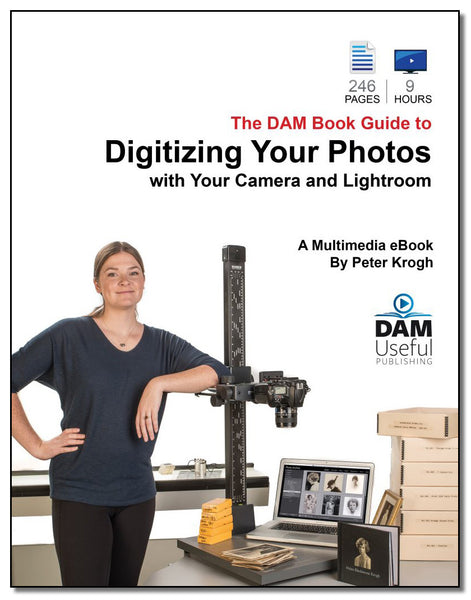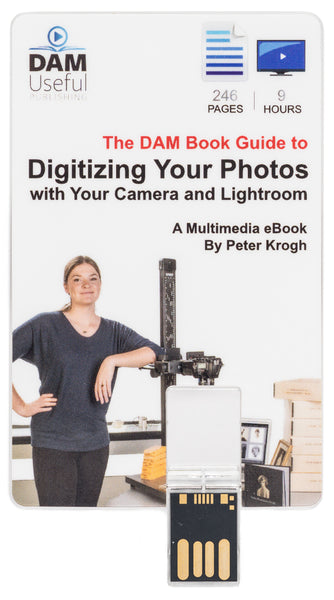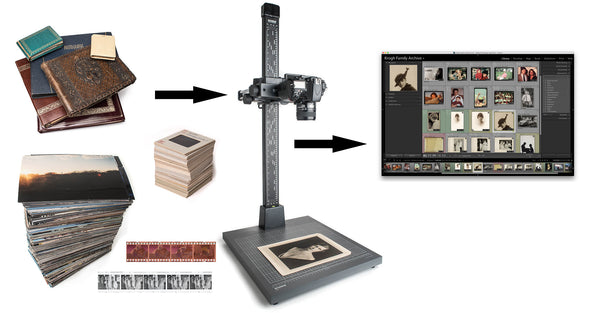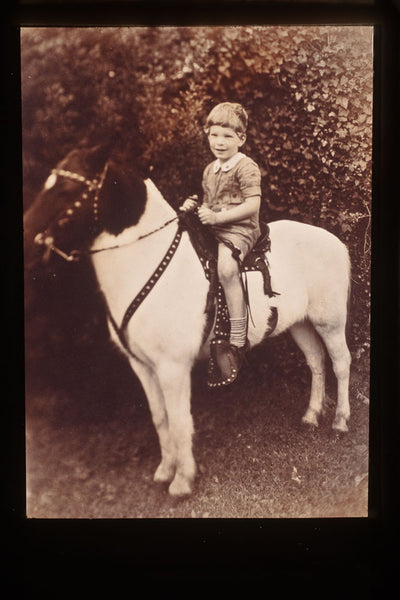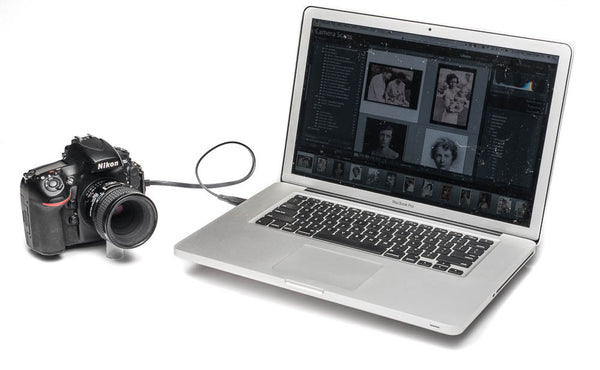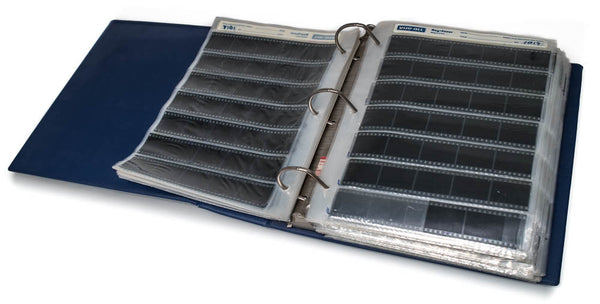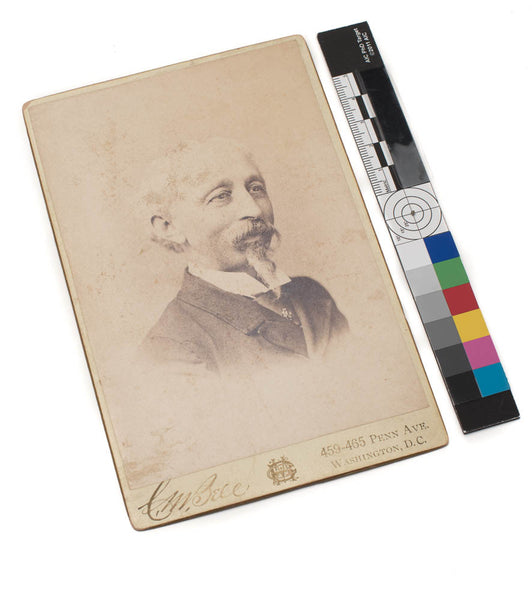Digitizing Your Photos with Your Camera and Lightroom
Rapid high-quality scans using a digital camera
Digitize Your History Now. Slides and negatives are losing color. Albums and drawers are stuffed with fading prints and fragile newspaper clippings. As you try to sort and identify what you’ve got, the clock is ticking on the institutional memory of families, corporations and historians. All the history and heritage you want to preserve are in front of you waiting to be dealt with.
You want a solution that is accurate and manageable. You don’t want to spin your wheels trying to figure it out how to best light, shoot and track all the assets you’ve got in front of you.
And, you want it economical and efficient. In the end, you want to have peace of mind that your treasured photos and objects are captured and preserved for the future.
Peter Krogh's newest book provides answers and guidance on how to achieve all of the above.
Plan, Scan and Preserve
Digitizing Your Photos with Your Camera and Lightroom presents a comprehensive step-by-step guide for equipment selection, photo preparation, scanning workflow, tagging, curation and digital photo management. Drawing on the principles used by museums and institutions, the book presents a method that is within reach of millions of photographers, whether they are family historians, corporate collection managers, or professional archivists.
The Time to Digitize is Now
The digital camera has come of age as the preferred method for digitizing photos, film and documents. Families, companies and institutions can now make digital archives of important photos at unprecedented scale, speed and cost. These new digital archives will help you learn and share your history, and preserve it for the future.
Over the last decade, the digital camera has steadily become the scanning tool of choice for some of the most trusted image collections worldwide. It is used by institutions like the Library of Congress, the National Archives, as well as major museums and collections.
Faster, Better, Cheaper - Really!
Fast, high-quality scanning allows you to digitize entire collections at a fraction of the cost of older methods. Camera scanning can be done on-site, with any of the millions of high-quality digital cameras already in use by people and institutions. For many, the only additional purchases may be a modest outlay for a macro lens or copystand.
And, as always, if you are a VIP member, your 10% discount applies. You can find your code in your fulfilment email of your first order.
Table of Contents and Sample Chapter
If you aren’t familiar with the multimedia approach Peter uses in The DAM Book Guide series, check out the samples from Chapter 6. Videos and accompanying text demonstrate his successful multimedia approach to teaching. And, the Table of Contents will map out the thorough coverage Peter provides. Both of these are also available at www.theDAMbook.com/DYP for your review.
For educators and press, review copies of the book are available upon request. Please complete this form to request a copy.
- Format: PDF, ePUB, DVD, USB, Paperback+DVD
- Pages: 246
- Hours of video: 9.0
We have two digital download versions: PDF's play on computers; the ePUB currently plays on iPad and Android.
FORMATS
 MULTIMEDIA PDF for immediate download: $34.95
MULTIMEDIA PDF for immediate download: $34.95
![]() MULTIMEDIA ePUB for immediate download: $34.95
MULTIMEDIA ePUB for immediate download: $34.95
(Note that purchase of PDF entitles you to a free download of the EPUB version, and visa versa.)
![]() USB with MULTIMEDIA PDF & ePUB $44.95 plus shipping
USB with MULTIMEDIA PDF & ePUB $44.95 plus shipping
![]() DVD with MULTIMEDIA PDF & ePUB: $39.95 plus shipping
DVD with MULTIMEDIA PDF & ePUB: $39.95 plus shipping
 Paperback + DVD: $59.95 plus shipping
Paperback + DVD: $59.95 plus shipping
*** If you have a discount code, you will enter it on the Payment Processing page.***
Update: We're sorry to inform our EU and UK customers that as of December 31, 2020, they will not be able to purchase from our bookshop. We are sorry about this - we see DAM as a global concern. Once the UK and EU policies get clearer and more straightforward for small companies like us to be in compliance, we hope to return to sharing our books with everyone.
What readers are saying:








